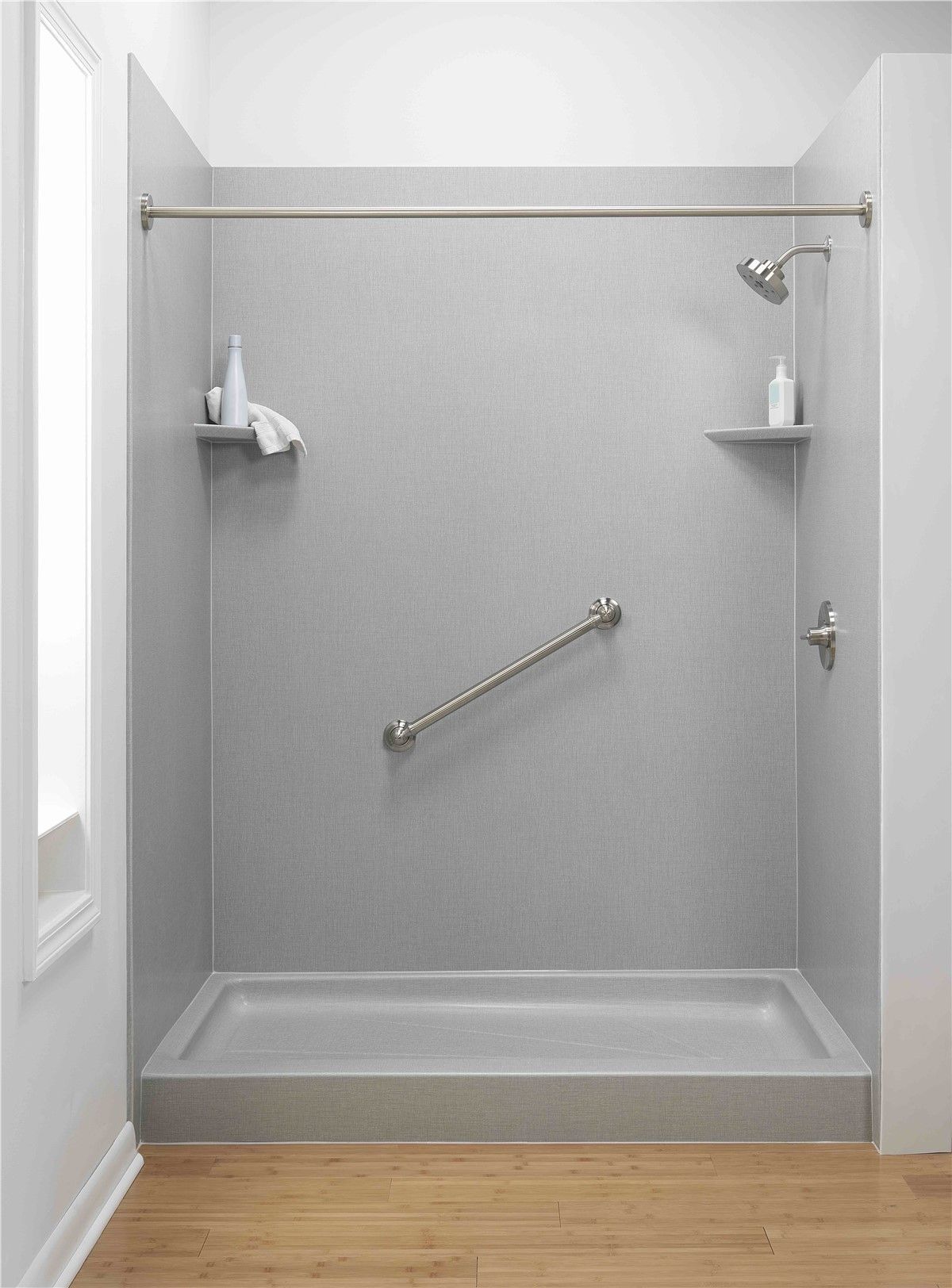Understanding the costs of bathtub replacement in Southern Maine
Why Consider Replacing Your Bathtub?
When it comes to home improvements, replacing your bathtub might not be the first thing that comes to mind, but it's one of those upgrades that can have a significant impact on both the functionality and aesthetic of your bathroom. Whether your tub is outdated, damaged, or simply doesn’t meet your current needs, a bathtub replacement can breathe new life into your space. But before diving in, it's crucial to understand the costs involved, especially if you're in Southern Maine where certain factors can influence pricing.
Replacing a bathtub is more than just swapping out the old for the new. It’s about enhancing your bathroom to better suit your lifestyle and ensuring that it's a safe and enjoyable place to unwind. Imagine stepping into a sleek, new bathtub that not only complements your bathroom’s design but also offers improved safety features that can give you peace of mind. For many homeowners, particularly those in Southern Maine, the motivation behind a bathtub replacement often stems from a desire to create a safer, more accessible bathing environment—especially as they age.
But let's be honest—cost is a significant factor in any home renovation project. Whether you're considering a standard bathtub, a walk-in tub, or a complete tub-to-shower conversion, understanding the financial aspects can help you make informed decisions.
Factors That Influence Bathtub Replacement Costs in Southern Maine
So, what exactly goes into the cost of replacing a bathtub in Southern Maine? Well, there are a few key factors that can significantly influence the final price tag. Whether you're looking to do a simple replacement or a more complex upgrade, it’s important to know what to expect.
First up, the type of bathtub you choose plays a major role in the overall cost. Are you sticking with a traditional alcove tub, or are you upgrading to a more luxurious soaking tub or a walk-in model? The material of the tub—whether it’s acrylic, fiberglass, cast iron, or something else—also affects the price. Acrylic and fiberglass tend to be more budget-friendly, while cast iron, known for its durability, can be on the higher end of the cost spectrum.
Next, consider the installation process. If you’re simply replacing an old tub with a new one of the same size and shape, the installation might be relatively straightforward and less expensive. However, if you’re considering a tub-to-shower conversion or installing a walk-in tub, the complexity of the project can drive up labor costs. Structural modifications, plumbing updates, and even the removal of old tiles can add to the final bill.
Another factor to keep in mind is the location of your home in Southern Maine. Depending on where you live, contractor availability and local labor rates can vary, which can impact the overall cost. If you live in a more remote area, you might face higher transportation or delivery fees for your new tub and materials.
And then there’s the extras—the little details that can quickly add up. Upgrading fixtures, adding grab bars, or opting for custom tiling around the tub can enhance both the look and functionality of your bathroom, but they also come with additional costs. It’s worth considering these options if you’re looking to create a bathroom that truly meets your needs and stands the test of time.
Finally, don’t forget about permits and inspections. Depending on the scope of your project, you might need to obtain permits from your local municipality, which can also add to the cost. While it might seem like an unnecessary expense, ensuring that your project is up to code can save you from headaches down the road.
Breaking Down the Typical Costs of Bathtub Replacement
Now that we’ve covered the factors that influence the cost, let’s get into some actual numbers. Understanding the typical costs involved in a bathtub replacement can help you budget more effectively and avoid any surprises.
Starting with the cost of the bathtub itself, prices can range widely depending on the type and material. For a basic acrylic or fiberglass tub, you might be looking at anywhere from $200 to $1,000. These options are affordable and come in a variety of styles, making them popular choices for many homeowners. If you’re leaning toward a more durable material like cast iron, the price can jump to between $500 and $2,500. And if luxury is what you’re after, a custom or high-end soaking tub could set you back anywhere from $1,500 to $5,000 or more.
Next up is the installation cost, which is often where the biggest variable lies. For a straightforward tub replacement, you can expect to pay between $1,000 and $3,000 for labor, depending on the complexity of the job and the contractor you choose. This includes removing the old tub, preparing the site, and installing the new tub. If your project involves additional work like rerouting plumbing, structural changes, or custom tiling, the labor costs can easily climb to $3,000 to $5,000 or more.
But the costs don’t stop there. Additional materials and fixtures can also add to your budget. For example, upgrading to a new set of faucets and fixtures might cost an additional $200 to $800, depending on the brand and style you choose. If you’re adding safety features like grab bars or non-slip flooring, that could add another $100 to $500. And don’t forget about the finishing touches—new tiling around the tub, for instance, could cost between $1,000 and $3,000, depending on the material and the area being tiled.
Another cost that often gets overlooked is disposal fees for the old tub. Depending on your contractor and location, removing and disposing of the old bathtub could cost you an additional $100 to $300. While this might seem like a small amount in the grand scheme of things, it’s an important detail to include in your budget to avoid any last-minute surprises.
In total, the cost of replacing a bathtub in Southern Maine can range anywhere from $2,500 to $10,000 or more, depending on the scope of the project and the choices you make. While this might seem like a wide range, having a clear understanding of these costs can help you make informed decisions that align with your budget and your vision for your bathroom.
Tips for Managing Bathtub Replacement Costs Without Compromising Quality
When it comes to replacing your bathtub, there are definitely ways to manage the costs without sacrificing quality or safety. Let’s dive into some practical tips that can help you get the most value out of your project while staying within your budget.
First, consider shopping around for the best deals on materials. The cost of bathtubs and fixtures can vary significantly depending on where you purchase them. Check out local home improvement stores, online retailers, and even specialty shops in Southern Maine. Sometimes, you can find great deals on high-quality tubs if you’re willing to wait for a sale or explore clearance options. Additionally, consider talking to your contractor about potential discounts they might be able to secure through their supplier relationships.
Another way to manage costs is by being strategic about the scope of your project. For example, if your existing bathtub is still in decent shape but just looks a bit dated, you might opt for a tub refinishing instead of a full replacement. Refinishing involves re-coating the surface of your tub, which can give it a fresh, new appearance at a fraction of the cost—typically ranging from $300 to $1,000, depending on the condition of the tub and the materials used.
If you’re set on a full replacement, think about the timing of your project. Scheduling your bathtub replacement during off-peak times, such as late winter or early spring, can sometimes result in lower labor costs as contractors might have more availability and offer competitive pricing. Plus, planning ahead and avoiding the rush can give you more time to research and make decisions without feeling pressured.
One area where homeowners often overspend is on customization. While custom tiles and high-end fixtures can certainly add a personal touch to your bathroom, they can also add significantly to your budget. Consider opting for stylish yet affordable alternatives, or focus your customizations on one or two key areas rather than trying to upgrade everything at once. You can still achieve a beautiful, functional bathroom without going overboard.
Labor costs are another big factor, and one way to potentially save money is by bundling your bathtub replacement with other bathroom renovations. For example, if you’re also planning to replace your shower, flooring, or vanity, doing it all at once can reduce the overall labor costs compared to tackling each project separately. Some contractors offer package deals for multiple renovations, so it’s worth exploring this option if you have more than one upgrade in mind.
Finally, communicate openly with your contractor about your budget and priorities. A good contractor will work with you to find cost-effective solutions that still meet your needs. They might suggest alternative materials, adjust the project timeline, or offer creative ideas that can help you save money without compromising the quality or safety of your new bathtub.
The Long-Term Value of Bathtub Replacement in Southern Maine
As we wrap up this discussion on the costs and considerations of replacing a bathtub in Southern Maine, it’s important to look beyond the initial expenses and focus on the long-term value this investment can bring to your home and your life.
One of the most significant benefits of replacing your bathtub is the immediate improvement in safety and accessibility. For many homeowners, especially those who are aging or have mobility concerns, a new bathtub—particularly a walk-in tub—can make a world of difference. By reducing the risk of slips and falls, you’re not only protecting yourself and your loved ones but also potentially saving on future medical costs and the associated stress of dealing with injuries.
In addition to safety, a new bathtub can greatly enhance your daily comfort and relaxation. Whether you choose a deep soaking tub, a walk-in model, or a luxurious spa-like experience, having a bathtub that suits your lifestyle can make your bathroom a personal retreat. This is an investment in your well-being, offering you a space to unwind and recharge after a long day.
But the value of a bathtub replacement goes beyond personal enjoyment—it can also have a positive impact on the resale value of your home. In Southern Maine, where the housing market can be competitive, updated bathrooms are a key selling point for potential buyers. A well-designed, modern bathroom with a new bathtub can increase the appeal of your home, making it more attractive and potentially leading to a higher selling price. Even if you’re not planning to sell anytime soon, knowing that your investment is contributing to your home’s overall value can provide peace of mind.
Another aspect to consider is the durability and longevity of your new bathtub. Choosing high-quality materials and professional installation ensures that your bathtub will stand the test of time, providing you with years of use without the need for frequent repairs or replacements. This long-term durability is particularly important when you factor in the harsh New England winters, where the last thing you want to worry about is a leaky or cracked bathtub.
Moreover, a new bathtub can lead to energy and water savings. Many modern tubs are designed with efficiency in mind, using less water without sacrificing comfort. This not only helps the environment but can also lower your utility bills over time, adding another layer of value to your investment.
In conclusion, while the upfront costs of a bathtub replacement might seem daunting, the long-term benefits make it a worthwhile investment. From enhancing safety and comfort to increasing your home’s value and providing long-term savings, a new bathtub can significantly improve your quality of life in Southern Maine. So, whether you’re planning to age in place or simply want to enjoy a more luxurious bathing experience, replacing your bathtub is a step toward creating a safer, more beautiful, and more functional home.
Blog






